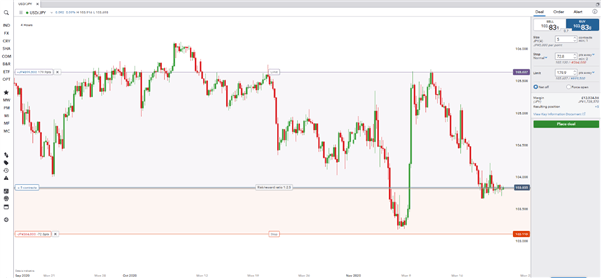US traders—from pros to hobbyists – often have different goals when speculating on the markets.
The fast-paced world of scalping; the leisurely marathon of position trading; the technical prowess of algorithmic trading. When engaging in the financial markets, there is a style that matches most personality types. And, in a year of geopolitical turbulence and high volatility, potential opportunities can arise.
Faced with choppy charts and the financial potential they imply; Dabblers, Hobbyists and Pro traders alike will have their own strategies in mind. But what are the characteristics of these very different trader types, and what do the differences between them mean for their approach to the market? We discuss these very different trader types below.
The dabbler trader
The Dabbler trader is often the type who has read the success stories that trading conversations disproportionally contain, and wants a piece of the action – while being somewhat ambivalent about the commitment level required. Although some dabblers may be fairly well informed on the technical and fundamental factors that can move markets, others may underestimate the degree of preparation necessary.
The inexperience of dabblers in the market can contrast markedly with more seasoned traders. For example, while an asset’s sudden price plunge may prompt a Dabbler to go short, a Pro may see the bigger picture – perhaps as an example, price being set to test a key support level, raising the chance of a bullish reversal.
To this end, the collective Dabblers’ efforts may affect the way price plays out in a way Pros look to exploit. In our above example, an array of Dabblers may push price to lower lows, while Pros simply wait for their efforts to result in oversold conditions against which they look to buy.
Overall, dabbling implies a lack of application, and Dabbler traders may indeed be the type who are looking for ‘quick fixes’ rather than sustained effort. Dabbling as a trader can be particularly risky when pairing a lack of knowledge with a higher average frequency. Therefore, using a risk-free demo account, where traders can build experience, experiment with various strategies, and understand why a setup went wrong – without taking a painful hit to the wallet – is a useful first step into ‘live’ trading.
The hobbyist trader
The Hobbyist trader keeps one eye on the market, but isn’t watching the charts all day long. As a less active trader than the Pro on a day-to-day basis, the Hobbyist may be best suited to ‘swing trading’, for which positions are held from a few hours to a few weeks; algorithmic trading, which uses computer programs to place trades according to defined rules; or even longer-term position trading, where positions can be held for months or even years. Consequently, the Hobbyist naturally will not be making the same time commitments as a Pro.
However, spending less time at the computer doesn’t mean Hobbyist traders can slack on preparation if they want to be successful. While engaging in a long-term trade, Hobbyists still need to understand factors such as where price is in a range, key support levels, stop sizing, applying technical indicators, and the long-term fundamental factors that may impact a currency pair or asset during the course of the trade.
It was the intention to protect Hobbyists, Dabblers and other retail traders and investors that spawned more recent financial regulations in the US, led by the SEC, CFTC and NFA. These regulations address the level of potential risk and emotional stress undertaken by such traders, and indeed Pros, in order to help such traders make more informed decisions throughout their trading experience.
The pro
When it comes to professional trading, a genuine full-time commitment means everything. When Dabblers and part-timers envision a profitable future in the markets, chances are they aren’t mentally prepared for the time and effort it will entail. The sheer level of technical and fundamental know-how, not to mention strong emotional discipline, required to find success is not to be underestimated.
As a result, the pro traders that can make the market work for them are made of stern stuff – and will be putting the hours in. For the committed pro, day trading and scalping – the shortest-term trades – are on the table. Pros will need the concentration and calm demeanor to be able to process new market information and apply it to their decisions on a constant basis. In their minds, day traders will piece together a jigsaw puzzle of often disparate information, from chart patterns to indicators to fundamentals, to inform their move. Scalpers must often make split-second calls or risk moving too early or late and losing value.
Still working out the right trading style for you? Why not check out the DailyFX DNA FX Quiz and learn if your personality befits a scalping, swing trading or more long-term approach.
Which approach in today’s markets
Whether Dabbler, Hobbyist or Pro, if 2020 has taught us anything, it’s that trading the financial markets when conditions are volatile can be difficult and dangerous. For markets including crude oil, EUR/USD, the S&P 500 and more, the year has seen prices fluctuate wildly, making it increasingly tough for traders to think long term.
In these conditions, DailyFX – a world-leading news and analysis website – affords traders invaluable free analysis into the economic, political, and technical factors driving markets, helping them find opportunities amid the turbulence.



Be the first to comment